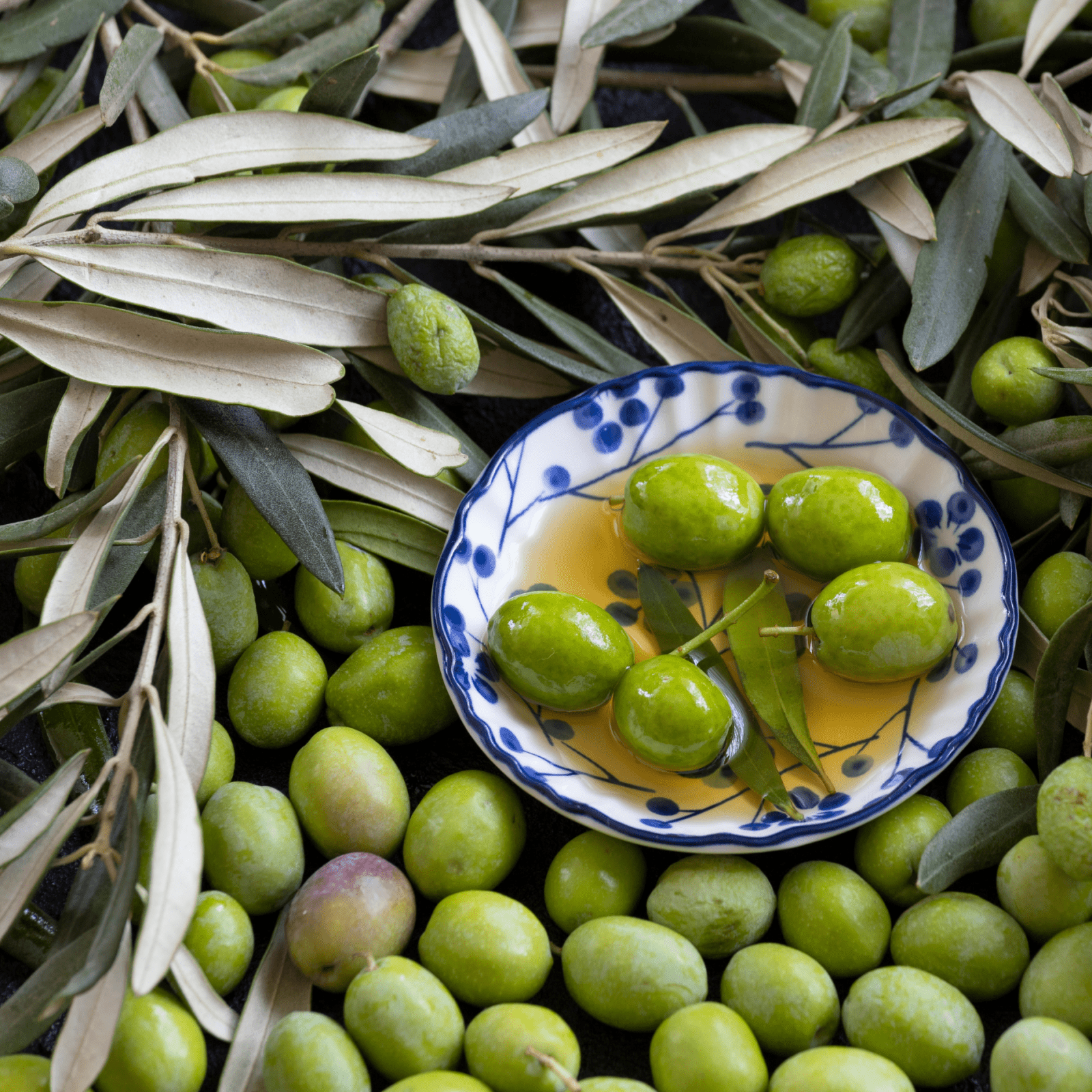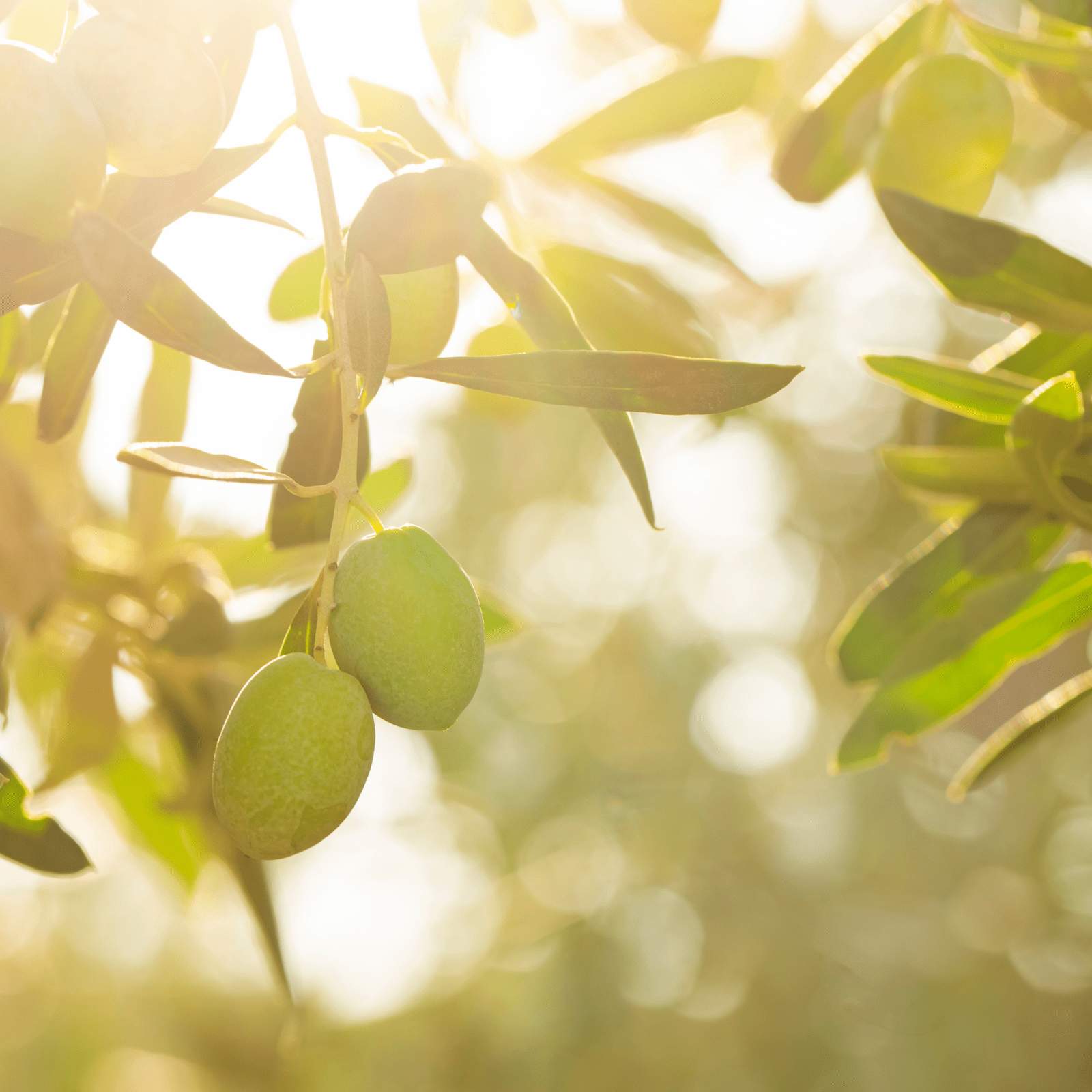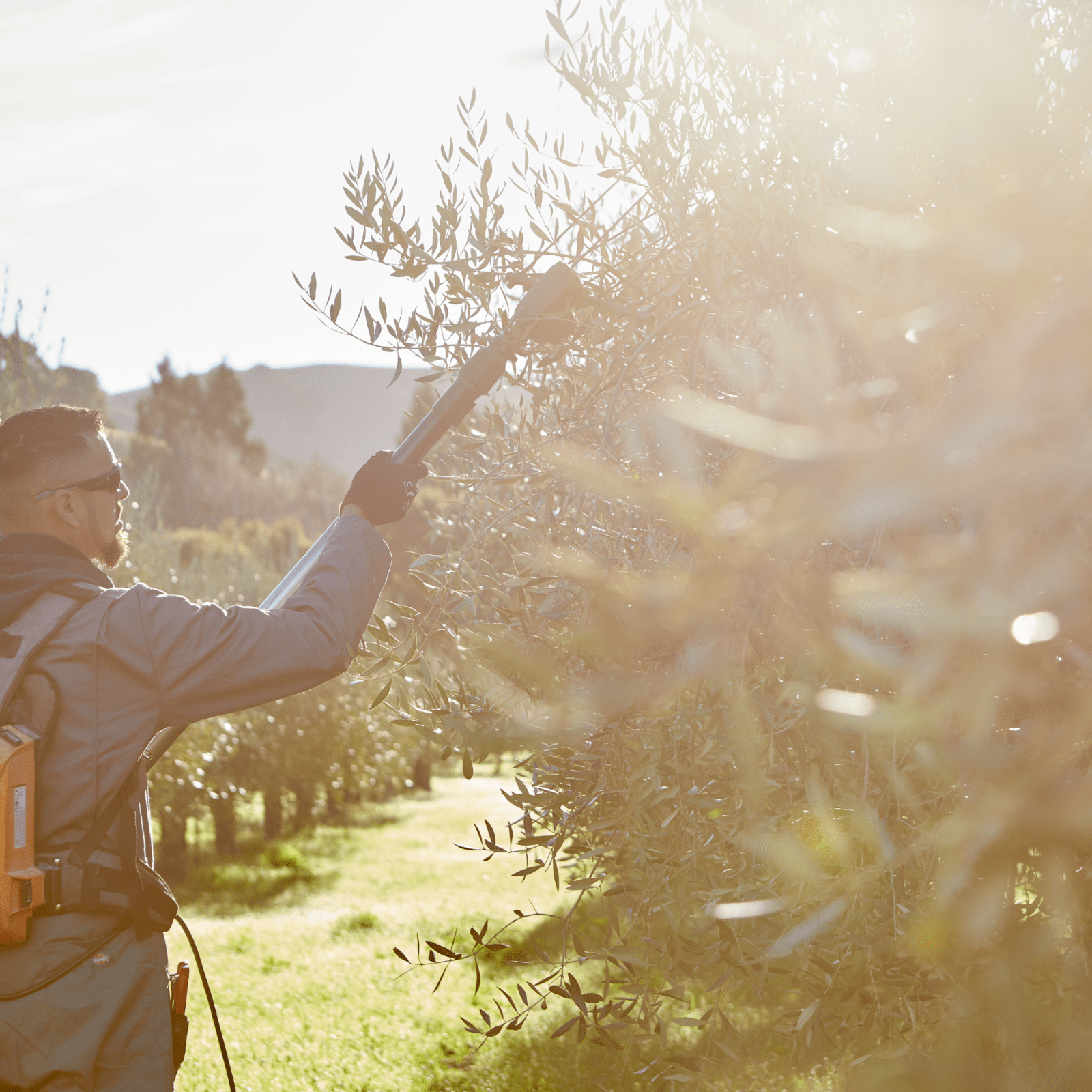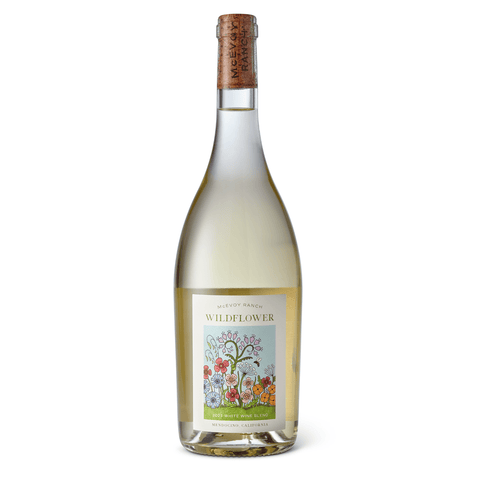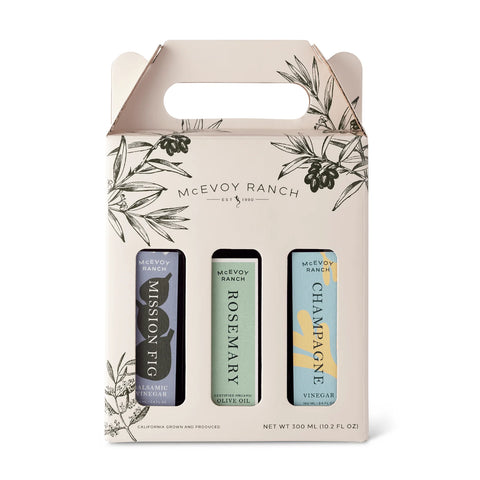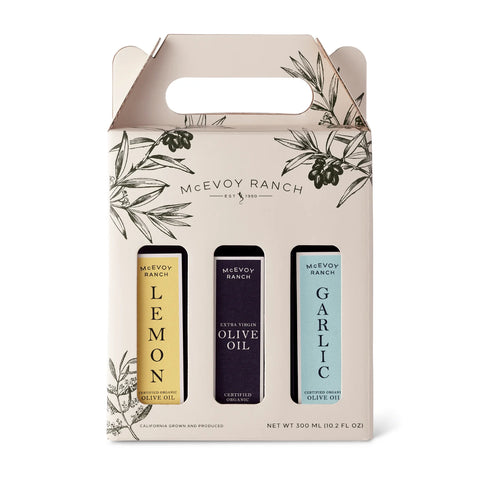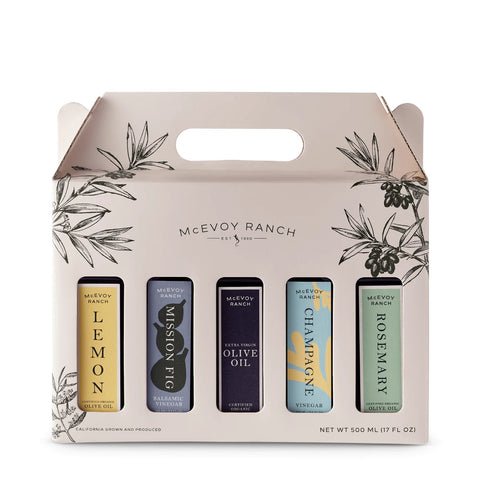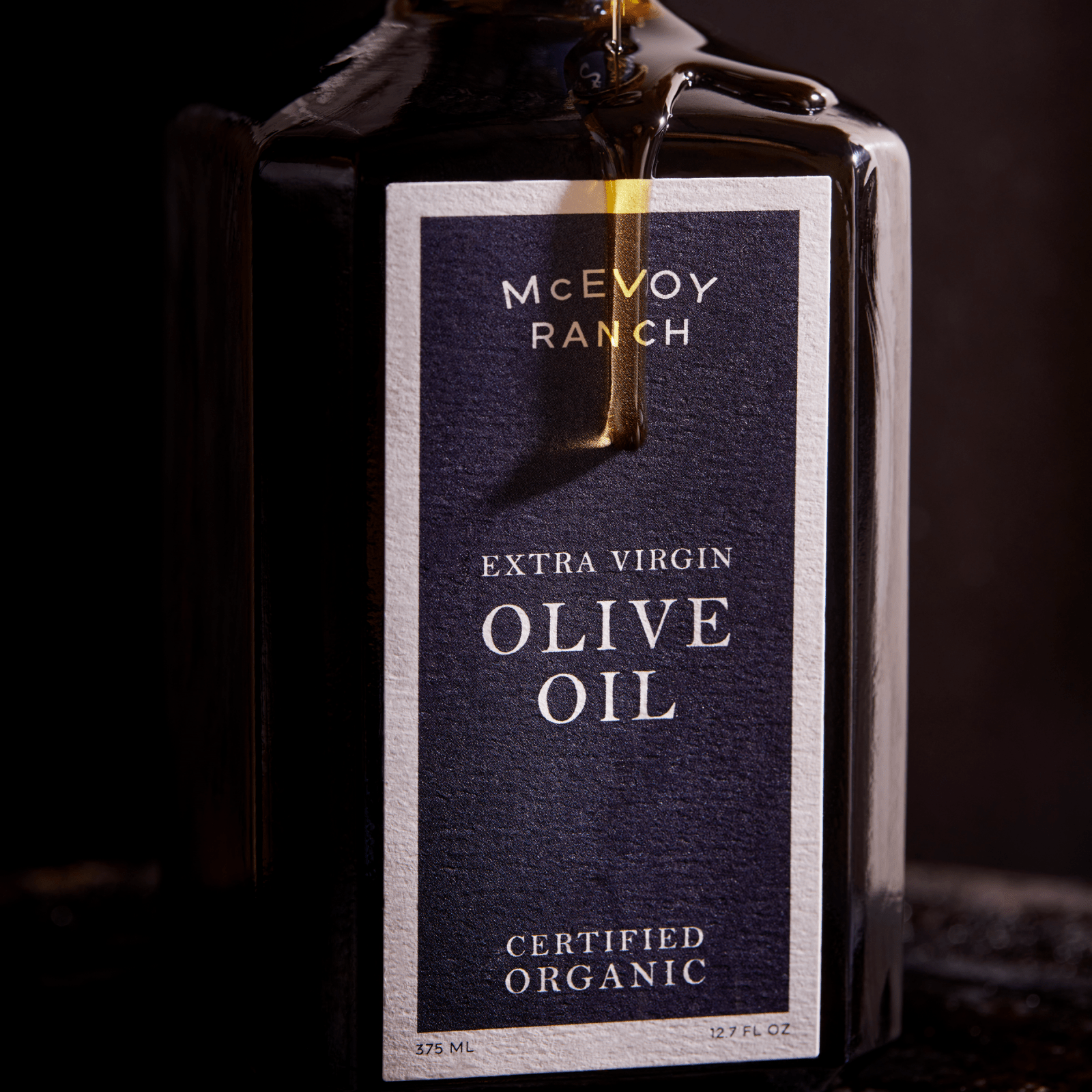
Polyphenols in extra virgin olive oil are more than mere antioxidants—they contribute to the rich, peppery bite and subtle bitterness that elevate the oil's complexity and depth, transforming even the simplest dishes into a gourmet experience. However, the polyphenol content can vary greatly between olive oils.
At McEvoy Ranch, our artisanal extra virgin olive oil, produced on our 550-acre estate in California, is brimming with polyphenols due to our meticulous production process. This makes it ideal for drizzling on its own or incorporating into a balanced, health-conscious diet.
In this article we will explore why some olive oils have higher polyphenol levels than others, the benefits of a high level and how to determine which olive oils are the best for your health.
Key Takeaways
-
High-polyphenol olive oils contain more of the compounds that confer certain health benefits.
-
Polyphenol content can vary depending on factors such as olive variety and harvest conditions.
-
Look for certain varieties and harvest dates on olive oils for high polyphenol levels.
How to Find Olive Oils with the Highest Polyphenol Content
Discovering olive oils with exceptionally high polyphenol levels requires a discerning eye. These oils can report a range from 50 mg/kg to 1,000 mg/kg of polyphenols. Certain methods of analysis can result in even higher numbers, so it is difficult to make comparisons. Variables such as harvest date, olive variety, climate, and production techniques all play pivotal roles in determining these levels.
Expert Tips for Selecting High-Polyphenol Olive Oils
For those seeking the finest, high-polyphenol olive oils, consider the following:
-
Early Harvest: Oils extracted from young, green olives typically have higher polyphenol levels.
-
Flavor Profile: Opt for oils with a pronounced, peppery and bitter bite—indicative of higher concentrations of oleuropein and oleocanthal.
-
High-polyphenol Varieties: Select oils made from polyphenol-rich olive varieties, such as Coratina, Picual, Koroneiki, Mission, Moraiolo, Chetoui, and Picholine.
What to Look for on the Label
Certain details on olive oil labels can provide insights into their polyphenol content:
-
Harvest Date: Oils from early harvests tend to have higher polyphenol levels.
-
Flavor Descriptions: Labels indicating "robust" flavor often suggest high polyphenol content.
-
Packaging: Always choose oils in dark bottles or other light-protective packaging, as this helps preserve their polyphenols.
-
QR Codes: Some premium brands offer chemical test results via QR codes on the bottle.
Factors That Influence Polyphenol Levels in Olive Oil
Polyphenol levels in olive oil are impacted by several critical factors, including harvest timing, regional climate, olive variety and processing methods. These elements directly affect the oil’s flavor, health benefits, and overall quality.
-
Harvest Time and Its Impact on Polyphenol Content
The timing of the olive harvest plays a crucial role in polyphenol concentration. Oils extracted from early-harvest olives tend to be richer in polyphenols, making them sought after by connoisseurs and health enthusiasts alike.
Additionally, the oil’s freshness is paramount—polyphenol levels decrease over time. .
-
Regional and Climatic Influence
California, with its Mediterranean-like climate, also serves as an ideal location for producing high-polyphenol olive oils. Warm days and cool nights, abundant sunshine, and dry summers create an optimal environment for olive trees to thrive and concentrate polyphenols in their fruit.
California's commitment to sustainable agriculture and modern production techniques ensures that premium olive oils, such as those from McEvoy Ranch, deliver exceptional quality with rich, health-promoting polyphenol content
What Is Considered a Healthy Polyphenol Level in Olive Oil?
Polyphenol levels vary widely, and there is no consensus on optimal consumption. Choosing oils that meet the EU health claim requirement of at least 5 mg of hydroxytyrosol and its derivatives per 20 g of olive oil should serve to maximize health benefits. These antioxidants play a significant role in reducing the risk of chronic diseases, including heart disease and diabetes, while promoting overall wellness. All extra virgin olive oil is healthy and contains beneficial minor compounds such as polyphenols. Eating olive oil with its beneficial polyphenols can greatly improve your health for many reasons:
-
Reduced risk of heart disease by 30%
-
Decreased formation of blood clots
-
Reduced high blood pressure
-
Lowered LDL cholesterol levels
-
Lowered risk of diabetes by 50-80%
Is High Polyphenol Olive Oil Always Better?
While high polyphenol olive oil provides numerous health benefits, it may not be the best choice for every dish. Its bold, sometimes bitter and peppery flavor can overpower more delicate ingredients, especially in light or subtly flavored recipes.
For cooking where a milder taste is preferred, a lower-polyphenol milder oil might be a better fit. However, for dishes where robust flavors are desired, such as grain salads, marinades, bean soups or drizzling over roasted vegetables, high polyphenol olive oil can enhance both the flavor and nutritional profile. The key is balancing taste and health benefits based on the dish.
Final Thoughts
High polyphenol extra virgin olive oils are far more than a kitchen staple; they are a health-enhancing, flavor-boosting ingredient worthy of any gourmet’s collection. Rich in antioxidants and polyphenols, these oils have the power to transform not only your dishes but your well-being.
When selecting olive oils, look beyond the label—opt for early-harvest oils from renowned regions and producers known for their commitment to quality.
FAQ
What are the health benefits of high polyphenol extra virgin olive oils?
High polyphenol EVOOs are rich in antioxidants that help reduce oxidative stress, lowering the risk of chronic diseases like heart disease and cancer. Key polyphenols, such as hydroxytyrosol and oleocanthal, offer anti-inflammatory benefits, improve cholesterol, and lower blood pressure. These oils may also support cognitive function and offer neuroprotective effects.
What should I look for when choosing extra virgin olive oil with high polyphenol content?
When selecting extra virgin olive oil with high polyphenol content, it’s essential to consider the source and processing methods. Choose cold-pressed oils to preserve polyphenols and check for freshness by looking for recent harvest dates.
What are some characteristics of polyphenol rich olive oils?
These oils have a bold, peppery, or fruity flavor, often accompanied by a vibrant green color and a thicker texture. The bitterness and pungency are signs of high polyphenol content, making them ideal for finishing dishes or adding depth to recipes.
Certified Organic
By CCOF
Sustainably Produced
At Our Ranch
Early Harvested
High Polyphenols
Award Winning
Extra Virgin Olive Oil
